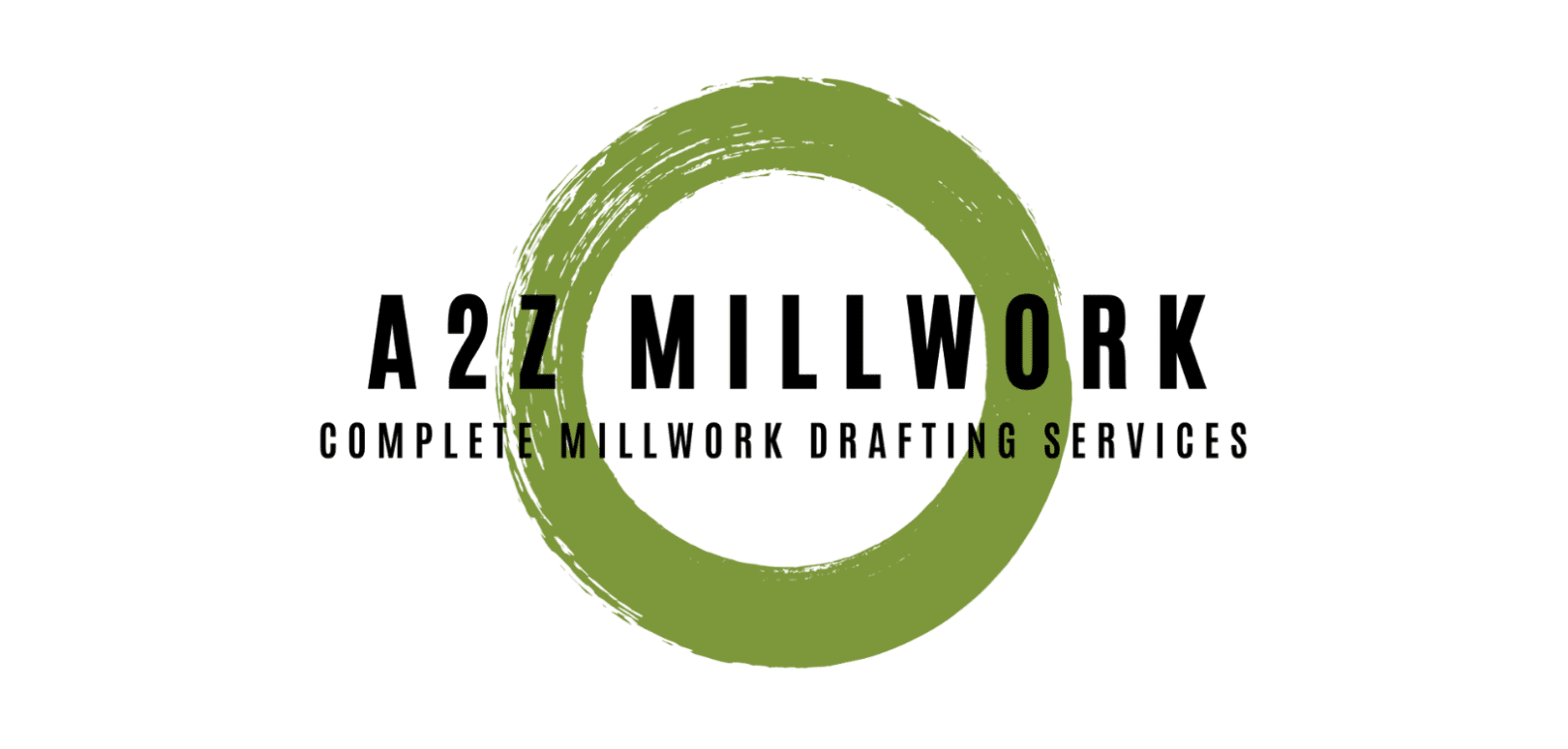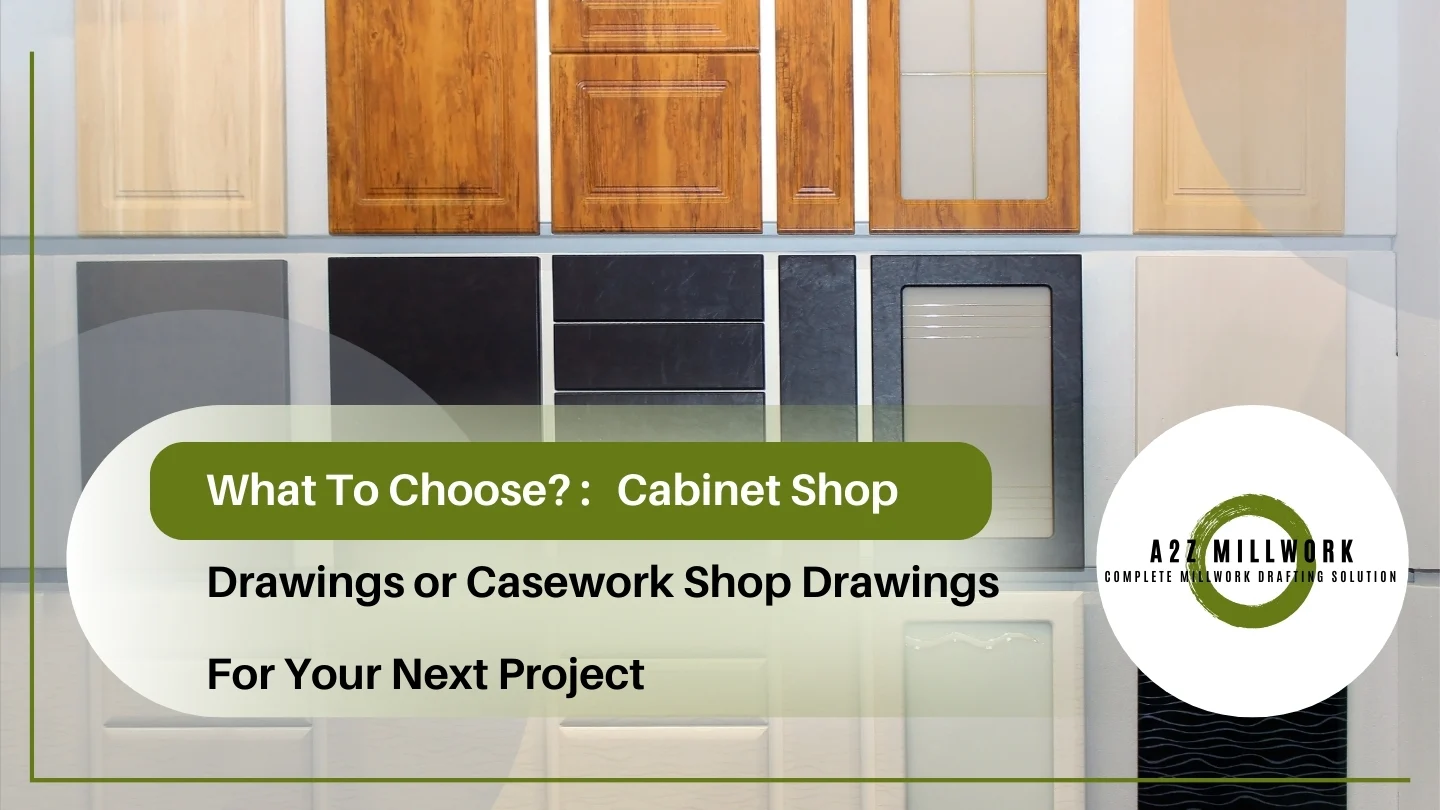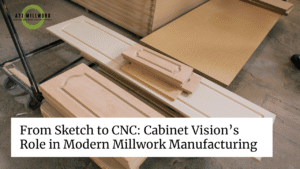Introduction
In the millwork and cabinetry industry, precision is everything. Whether you’re working on a custom kitchen for a residential home or designing cabinetry for a commercial office space, ensuring that your designs are executed flawlessly begins with detailed and accurate shop drawings. Two common types of shop drawings used in the U.S. market are Cabinet Shop Drawings and Casework Shop Drawings. While these terms may seem interchangeable, they cater to distinct needs and requirements in various projects.
So, how do you choose between cabinet shop drawings and casework shop drawings? In this comprehensive guide, we will explore the definitions, advantages, disadvantages, and real-world applications of both types. We will also use quantitative data from the U.S. market to highlight their relevance and provide insights into which one is better suited for specific projects.
Ultimately, the goal is to help you make an informed decision about whether cabinet shop drawings or casework shop drawings are the best fit for your needs. At the end of this article, we will also introduce A2Z Millwork Design, a leading provider of cabinet shop drawings in the United States, known for their accuracy, quality, and expertise.
Understanding Cabinet Shop Drawings
Cabinet shop drawings are detailed architectural and technical representations of custom cabinetry designs. These drawings focus on bespoke furniture pieces such as kitchen cabinets, bathroom vanities, and entertainment units. Each drawing provides precise measurements, materials, and assembly methods, ensuring that every component of the cabinet meets the client’s specifications.
Key Features of Cabinet Shop Drawings:
- Focus on custom, one-of-a-kind pieces
- Detailed dimensions and specifications for each cabinet
- Materials, hardware, and finishes are clearly identified
- Specific to high-end, residential, or custom commercial projects
Advantages of Cabinet Shop Drawings:
- Customization: One of the major benefits of cabinet shop drawings is the ability to fully customize the design to meet client specifications. Whether it’s a unique kitchen layout or a special entertainment center, these drawings ensure precision.
- Attention to Detail: Cabinet shop drawings tend to be more detailed than casework shop drawings, which allows for greater control over the final product.
- Enhanced Design Flexibility: Since these drawings focus on custom cabinetry, designers have the freedom to incorporate intricate designs, features, and materials that aren’t typically available in mass-produced items.
Disadvantages of Cabinet Shop Drawings:
- Higher Costs: Customization often comes with a price. Projects that use cabinet shop drawings tend to be more expensive, both in terms of design and manufacturing costs.
- Longer Lead Time: Due to the custom nature of these cabinets, production and installation can take longer than pre-fabricated casework designs.
Understanding Casework Shop Drawings
Casework shop drawings, on the other hand, pertain to the production of modular, pre-fabricated cabinetry that is typically mass-produced. These drawings are often used for commercial projects like offices, schools, and hospitals, where uniformity and cost-effectiveness are priorities.
Key Features of Casework Shop Drawings:
- Focus on modular, mass-produced cabinetry
- Efficient and cost-effective
- Commonly used for commercial projects
- Less emphasis on customization, more on standardization
Advantages of Casework Shop Drawings:
- Cost-Effective: Since casework is often mass-produced, it is generally more affordable than custom cabinetry. This makes it an attractive option for large-scale projects.
- Shorter Production Times: Due to its modular nature, casework is quicker to produce and install, which can be a significant advantage in commercial projects with tight deadlines.
- Standardization: Casework shop drawings follow standardized dimensions and materials, ensuring uniformity across multiple units in a project.
Disadvantages of Casework Shop Drawings:
- Limited Customization: Casework is less flexible when it comes to unique design requests. If your client is looking for something truly bespoke, casework may not be the best choice.
- Lower Perceived Quality: In some cases, the standardized approach to casework may be viewed as lower in quality compared to fully custom cabinetry, especially in high-end residential projects.
Real-World Applications: When to Use Cabinet vs. Casework Shop Drawings
Choosing between cabinet and casework shop drawings often depends on the type of project and the specific needs of the client. Let’s examine some real-world applications and U.S. market trends to help clarify when each option is the best choice.
Residential Projects (Custom Kitchens, Bathrooms, and Living Areas)
In the U.S., the demand for custom cabinetry in high-end residential projects continues to grow. According to a 2023 market report from IBISWorld, the U.S. custom cabinetry market is expected to grow by 2.5% annually through 2028, fueled by the demand for personalized, luxury home spaces. Homeowners looking to create unique, functional kitchens and living spaces tend to prefer custom cabinetry, which is where cabinet shop drawings excel.
Best Choice: Cabinet Shop Drawings
- Why? Custom residential projects require flexibility and detailed designs that are only possible through cabinet shop drawings. Homeowners want cabinetry tailored to their needs, and cabinet shop drawings provide the customization necessary for a perfect fit.
Commercial Projects (Offices, Hospitals, Schools)
In commercial projects, speed and cost are often the primary considerations. According to the Construction Labor Market Analyzer (CLMA), commercial construction in the U.S. is expected to increase by 3.2% annually through 2027, with an emphasis on healthcare and education facilities. These projects typically require large quantities of standardized cabinetry, making casework shop drawings the better option.
Best Choice: Casework Shop Drawings
- Why? Commercial projects prioritize efficiency and cost-effectiveness. Since casework is modular and can be mass-produced, it is ideal for projects where uniformity and speed are crucial.
Hospitality Projects (Hotels, Restaurants)
The hospitality industry requires a blend of customization and cost-effectiveness. Hotels and restaurants often feature a mix of standardized casework for guest rooms and custom cabinetry for public spaces like lobbies and bars. According to Statista, the U.S. hotel industry is projected to generate over $208 billion in revenue by 2025, creating a significant demand for both custom and modular cabinetry.
Best Choice: Combination of Cabinet and Casework Shop Drawings
- Why? Hospitality projects often require both custom and standardized cabinetry. Custom cabinet shop drawings may be used for public-facing areas, while casework shop drawings are ideal for guest rooms and back-of-house areas.
Quantitative Data from the U.S. Market
The U.S. cabinetry market is one of the largest in the world, with an estimated value of $105 billion in 2023. Within this market, both custom cabinetry and casework have significant shares.
- Custom Cabinetry: According to NKBA (National Kitchen & Bath Association), custom cabinetry accounted for approximately 45% of the total market in 2022. The demand for custom cabinets has been driven by homeowners seeking unique, personalized designs for their kitchens, bathrooms, and living spaces.
- Casework: In contrast, the modular casework market is growing at a steady pace, fueled by the demand for efficient, cost-effective solutions in commercial construction. Casework is expected to grow by 4.2% annually through 2026, as schools, hospitals, and offices continue to expand and modernize.
Making the Right Choice: Cabinet Shop Drawings vs. Casework Shop Drawings
After comparing the advantages and disadvantages, it’s clear that the choice between cabinet shop drawings and casework shop drawings depends largely on the specific requirements of the project.
- For High-End Residential Projects: Cabinet shop drawings are the best choice due to their flexibility, precision, and ability to meet the unique demands of homeowners.
- For Large Commercial Projects: Casework shop drawings offer the most value, providing cost-effective and standardized solutions for large-scale installations.
- For Hospitality and Mixed-Use Projects: A combination of both cabinet and casework shop drawings is often the most effective approach, balancing customization with efficiency.
Conclusion
Choosing between cabinet shop drawings and casework shop drawings is an essential decision that can significantly impact the success of your project. While cabinet shop drawings offer unmatched customization and detail, casework shop drawings provide efficiency and cost savings for large-scale projects.
In the U.S. market, both options have their place, and the choice ultimately depends on the project’s scope, budget, and design requirements. At A2Z Millwork Design, we specialize in creating high-quality cabinet vision shop drawings for residential, commercial, and hospitality projects across the United States. Our expertise in precision design ensures that your project is executed to perfection, no matter the complexity or size.






